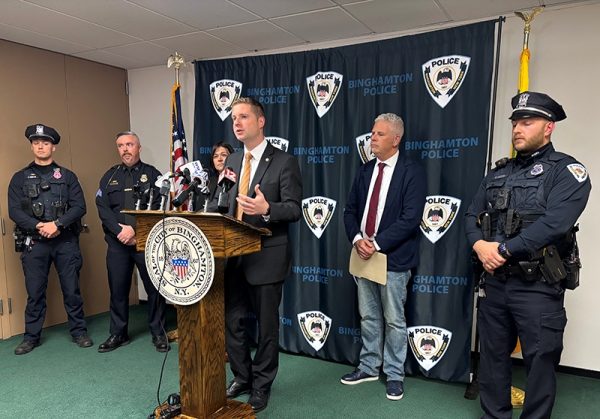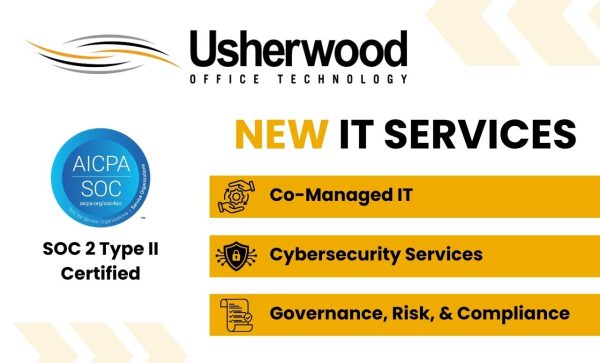Get our email updates
Stay up-to-date on the companies, people and issues that impact businesses in Syracuse, Central New York and beyond.
What's New
Upcoming Events
CNYBJ Job Board

City of Binghamton, Broome County partnering on expanded mental-health crisis response
BINGHAMTON, N.Y. — The City of Binghamton is providing $100,000 to support the expansion of local mental-health crisis response. Binghamton Mayor Jared Kraham joined Broome

Turning Stone says its major expansion project will open much sooner than expected
VERONA, N.Y. — The Oneida Indian Nation on Wednesday said the massive Turning Stone Evolution expansion project is progressing ahead of schedule with the Crescent

Broome County appoints new deputy county executive for physical services
BINGHAMTON, N.Y. — Broome County Executive Jason Garnar has announced the appointment of Hal McCabe as the county’s new deputy county executive for physical services. In this position, McCabe will oversee 20 departments, “ensuring coordinated operations and strategic investment in Broome County’s infrastructure and physical assets.” McCabe most recently served as mayor of the Village
Get Instant Access to This Article
Become a Central New York Business Journal subscriber and get immediate access to all of our subscriber-only content and much more.
- Critical Central New York business news and analysis updated daily.
- Immediate access to all subscriber-only content on our website.
- Get a year’s worth of the Print Edition of The Central New York Business Journal.
- Special Feature Publications such as the Book of Lists and Revitalize Greater Binghamton, Mohawk Valley, and Syracuse Magazines
Click here to purchase a paywall bypass link for this article.
BINGHAMTON, N.Y. — Broome County Executive Jason Garnar has announced the appointment of Hal McCabe as the county’s new deputy county executive for physical services.
In this position, McCabe will oversee 20 departments, “ensuring coordinated operations and strategic investment in Broome County’s infrastructure and physical assets.”
McCabe most recently served as mayor of the Village of Homer in Cortland County from 2017-2025. In that role, he managed a multi-department operation including public works, water and sewer, fire, police, recreation, and code enforcement.
During his tenure, McCabe secured more than $15 million in state and federal grants, including a $10 million Downtown Revitalization Initiative award and $1 million in Restore NY funding, Broome County said.
“Hal has a proven track record of managing complex operations, securing major infrastructure improvements, and delivering real results for the communities he serves,” Garnar said in the announcement. “His leadership and extensive experience across all levels of government will be invaluable as we continue improving Broome County’s infrastructure and services.”
Altogether, McCabe brings more than two decades of experience in public administration, government relations, and political leadership at the local, state, and federal levels, per the Broome County announcement.
“Broome County has been instrumental in shaping the person I am today, instilling in me the values of hard work, resilience, and loyalty. My introduction to municipal service began with a summer job in the Town of Vestal Water Department in 1990, and most of my lifelong friendships were formed right here,” McCabe said. “Having spent more than half my life in Broome County, I am deeply honored to once again serve this community and to work alongside an exceptional team dedicated to building a stronger, brighter future for all our residents.”

CenterState CEO recognizes more than 350 companies during Economic Champions luncheon
SYRACUSE, N.Y. — CenterState CEO on Wednesday recognized the efforts of 353 businesses and nonprofits during its annual Economic Champions Celebration at the Nicholas J.

Strengthen Every Layer of Your IT Security with Usherwood’s Expanded Managed IT Services
Usherwood has announced an expanded portfolio of IT services, including Governance, Risk and Compliance (GRC), Cybersecurity, and Co-Managed IT. These new offerings are designed to

Colgate says students with family income up to $175K can attend tuition free
HAMILTON, N.Y. — Colgate University says students with a total family income up to $175,000 can now attend the school tuition-free. In addition, those students

Utica University president Pfannestiel to step down at year’s end; successor named
UTICA, N.Y. — Utica University President Todd Pfannestiel has submitted his resignation and will step down at the end of the year. At the same

Rochester company acquires Utica engineering firm
ROCHESTER, N.Y. — Joseph C. Lu Engineering, PC, a Rochester–based engineering firm with offices in the Syracuse area and Binghamton, has acquired Eisenbach & Ruhnke Engineering, P.C., an engineering firm based in Utica. With Lu Engineers expanding its presence to Utica, the firm will “gain stronger access to local and municipal markets and increase capacity
Get Instant Access to This Article
Become a Central New York Business Journal subscriber and get immediate access to all of our subscriber-only content and much more.
- Critical Central New York business news and analysis updated daily.
- Immediate access to all subscriber-only content on our website.
- Get a year’s worth of the Print Edition of The Central New York Business Journal.
- Special Feature Publications such as the Book of Lists and Revitalize Greater Binghamton, Mohawk Valley, and Syracuse Magazines
Click here to purchase a paywall bypass link for this article.
ROCHESTER, N.Y. — Joseph C. Lu Engineering, PC, a Rochester–based engineering firm with offices in the Syracuse area and Binghamton, has acquired Eisenbach & Ruhnke Engineering, P.C., an engineering firm based in Utica.
With Lu Engineers expanding its presence to Utica, the firm will “gain stronger access to local and municipal markets and increase capacity to support projects throughout the Utica region,” per the Lu Engineers announcement.
The acquisition closed on Oct. 19, Lu Engineers tells CNYBJ in an email. The firm didn’t disclose any financial terms of the purchase.
Prior to the deal, Lu Engineers had 102 employees and is adding eight staff members from Eisenbach & Ruhnke Engineering.
Eisenbach & Ruhnke brings a team of engineers, scientists, specialists, energy managers and auditors who provide advanced energy and environmental engineering solutions in areas that complement Lu Engineers’ established strength in civil/site, transportation engineering and environmental consulting. The acquisition enables Lu Engineers to pursue “larger and more complex” projects throughout New York state and to diversify projects to include mechanical, electrical and plumbing (MEP) engineering services.
“We’re a small firm but a mighty firm that keeps growing every day. The acquisition is a strategic opportunity for us and impactful to our growth,” Cletus Ezenwa, president and CEO of Lu Engineers, contended in the announcement. “Lu Engineers has a great reputation for transportation and environmental projects, and expanding our capabilities to support mechanical, electrical and plumbing (MEP) services will enable us to serve on a broader scale and deliver even greater value to our clients.”
Lu Engineers is a veteran-owned, New York State-certified Disadvantaged and Minority-owned Business Enterprise. For more than 45 years, Lu has provided engineering, technical, and operational services to federal, state, and local governments, as well as private industries and developers.
“We are excited to become part of Lu Engineers; a firm committed to quality and serving its clients,” Jack Eisenbach, former CEO of Eisenbach & Ruhnke Engineering, P.C., said in the announcement. “Eisenbach & Ruhnke Engineering has been in existence for almost 40 years, and we have worked with many engineering firms. Our staff is committed to maintaining the quality of service for the clients of the combined firm.”
Eisenbach also tells CNYBJ that the transaction represents a succession plan after 39 years of owning the business, but he plans to continue working for two years part time as a senior associate.
Besides Rochester, DeWitt, and Utica, Lu Engineers also has offices in Buffalo and New York City.

ALBANY, N.Y. — Syracuse University, Le Moyne College, Cornell University, and Clarkson University are among 35 private colleges and universities awarded state funding for projects.

Syracuse police warn city businesses about fake invoice scam
SYRACUSE, N.Y. — The Syracuse Police Department is warning Syracuse businesses about a scam involving fake zoning invoices. The fake bills have been sent to
Get our email updates
Stay up-to-date on the companies, people and issues that impact businesses in Syracuse, Central New York and beyond.
